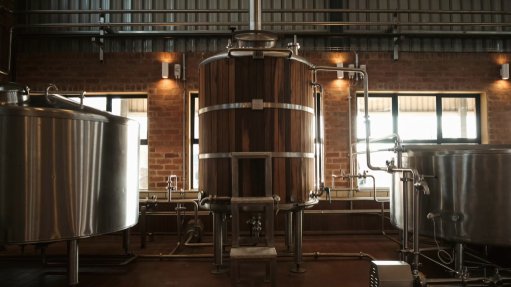Energy security key for prosperous copper mines


MSA Group More electricity generation capacity is required in Zambia
Photo by MSA
The recent prolonged drought in Zambia, home to an energy-intensive copper mining industry, brings the need for additional and diversified electricity production to the fore, as the country has traditionally relied on the hydropower it produced to generate the bulk of its electricity, mining industry consultancy MSA Group’s principal coal consultant Philip Mostert tells Mining Weekly.
“The July commissioning of the first 150 MW of the 300 MW coal-fired power plant at Maamba collieries is the first step in Zambia’s diversification of its energy mix. With the energy-hungry copper mines accounting for half of the electricity demand and the economy, growing at 5% a year for the past ten years, more electricity generation capacity is required,” Mostert highlights.
The project at Maamba Collieries Limited (MCL) – Zambia’s largest coal mining company – is not yet complete. It comprises the redevelopment of the existing coal mine and the construction of a mine-mouth, coal-fired thermal power station and related infrastructure near the town of Maamba.
The project was the first of its kind in Zambia and is expected to provide a dependable and sustainable baseload power source, which is crucial to the country’s energy security.
According to MCL’s website, the power plant uses two 510 TPH steam generators with circulating fluidised bed combustion technology, resulting in low emissions of sulphur oxide and nitrogen oxide.
Further aspects include steam generator technology suitable for efficient combustion of low-grade high-ash coal, adequate dust-control facilities at coal handling and transfer systems, and high-efficiency electrostatic precipitators that limit the emission of particulate matter in the flue gases to well below the level permitted as per World Bank norms.
The plant also disposes of ash to fill voids in the mined-out areas and for use by cement plants and brickmaking units. Water is sourced from the Kariba lake, the largest man-made waterbody in the world, and power is evacuated through a 330 kV double-circuit transmission line to the Muzuma substation.
Mining Weekly reported in July that the power station’s capacity would be increased to 600 MW in Phase 2, depending on demand.
Mostert highlights that part of the solution to Zambia’s energy supply problem is to diversify its electricity mix by incorporating coal-fired power plants.
Zambia currently has two coal mines – the former State-owned MCL mine and the Chinese-owned Maamba Collum coal mine, both in Southern Province.
“Although Zambia has relatively small coal deposits, compared with the vast resources of South Africa, Mozambique and Botswana, the majority of Southern Province’s coal deposits are well explored, with large enough blocks available for generally simple exploitation,” Mostert adds.
The MSA Group recently completed a review of a thermal coal asset with sufficient near-surface coal, requiring minor beneficiation, to supply a coal-fired power plant for its 25-year life, in Zambia.
Mostert denotes that based on the review study, an independent power producer proposed to construct a 100 MW coal-fired plant in Zambia.
He says further exploration and study work can potentially increase the available coal resource to extend the plant’s life. Several of these relatively small-scale coal mine power plant projects are currently in development in Southern Province, with further potential being investigated in Zambia’s relatively underexplored Western Province, Mostert adds.
Zambia is Africa’s second-largest copper producer after the Democratic Republic of Congo. The MSA Group principal consultant of gold and base metals Mike Robertson says the country’s mining industry is the mainstay of the economy, accounting for 12% of its gross domestic product, but has been significantly affected by five consecutive years of commodity price declines.
Meanwhile, Export Credit Insurance Corporation (ECIC) South Africa notes that commodities, whether raw or partially processed, are often the most significant exports of developing countries, and revenues obtained from them have an important effect on the economies and living standards in countries.
ECIC chief economist Tsidiso Disenyana says these countries, especially those in Africa, derive more than 90% of their export earnings from commodities.
While there have been marked price increases in other base metals since mid-January this year, copper has lagged in this regard, largely owing to supply surpluses forecast to continue for the next year or two.
Disenyana explains that commodity price fluctuations, along with the globalisation of the world economy and increased liberalisation of commodity markets, have led to profound changes that seriously affect the commodity-dependent economies of the developing world.
“Weak commodity prices have a negative impact on economic growth, countries’ financial resources and income distribution, and might lead to increased poverty instead of poverty alleviation,” he stresses, adding that the opposite also true during times of strong commodity prices.
Robertson highlights that the decline in the copper price has led to delays in project developments and has curtailed production at existing operations in Zambia.
In 2015, some mines in the Copperbelt were placed on care and maintenance on the back of low copper prices, mineral policy uncertainties and electricity supply constraints.
Over the past 15 years, the focus of copper production in Zambia shifted from the traditional Copperbelt, where formal mining has been taking place for almost 100 years, to the North-Western province, where about 70% of Zambia’s copper is currently produced by the Kansanshi, Lumwana and Sentinel mines, explains Robertson.
Zambia’s 2016 copper production is estimated to be about 700 000 t/y, while output is expected to rise to one-million tons a year in 2018.
Toronto, Canada-headquarterd gold mining company Barrick Gold owns the Lumwana mine, while base metals miner First Quantum Minerals owns the Kansanshi and Sentinel mines.
This year’s copper production forecast for Kansanshi is about 235 000 t, 122 000 t to 131 000 t for Lumwana and 135 000 t to 155 000 t for Sentinel.
Article Enquiry
Email Article
Save Article
Feedback
To advertise email advertising@creamermedia.co.za or click here
Comments
Press Office
Announcements
What's On
Subscribe to improve your user experience...
Option 1 (equivalent of R125 a month):
Receive a weekly copy of Creamer Media's Engineering News & Mining Weekly magazine
(print copy for those in South Africa and e-magazine for those outside of South Africa)
Receive daily email newsletters
Access to full search results
Access archive of magazine back copies
Access to Projects in Progress
Access to ONE Research Report of your choice in PDF format
Option 2 (equivalent of R375 a month):
All benefits from Option 1
PLUS
Access to Creamer Media's Research Channel Africa for ALL Research Reports, in PDF format, on various industrial and mining sectors
including Electricity; Water; Energy Transition; Hydrogen; Roads, Rail and Ports; Coal; Gold; Platinum; Battery Metals; etc.
Already a subscriber?
Forgotten your password?
Receive weekly copy of Creamer Media's Engineering News & Mining Weekly magazine (print copy for those in South Africa and e-magazine for those outside of South Africa)
➕
Recieve daily email newsletters
➕
Access to full search results
➕
Access archive of magazine back copies
➕
Access to Projects in Progress
➕
Access to ONE Research Report of your choice in PDF format
RESEARCH CHANNEL AFRICA
R4500 (equivalent of R375 a month)
SUBSCRIBEAll benefits from Option 1
➕
Access to Creamer Media's Research Channel Africa for ALL Research Reports on various industrial and mining sectors, in PDF format, including on:
Electricity
➕
Water
➕
Energy Transition
➕
Hydrogen
➕
Roads, Rail and Ports
➕
Coal
➕
Gold
➕
Platinum
➕
Battery Metals
➕
etc.
Receive all benefits from Option 1 or Option 2 delivered to numerous people at your company
➕
Multiple User names and Passwords for simultaneous log-ins
➕
Intranet integration access to all in your organisation



















